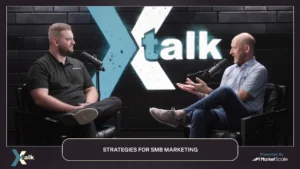New Startups Must Invest in Cloud-Based Data for Long-Term Company Success and Cost Efficiency
With the rise in rapid digital transformation, startups around the world are increasingly beginning their journeys as cloud-native entities. But what exactly is the benefit? Cloud-based software allows flexibility beyond measure, and assists in lowering the costs in keeping it up and running. In India, a good number of companies are adopting this trend. In the U.S., however, the story is quite different.
Old school companies, entangled in their existing IT setups find migration to the new software alternatives daunting and expensive. But this attitude is more than just a technological challenge; it’s a cultural one. Finance and IT departments at times are stubborn and unable to grasp the benefits of long-term gains that transitioning offers. The cloud not only streamlines operations but also adds value to a company when other operations come into play.
Gerry Mecca, Principal at EKG Group has a background in due diligence and M&A. Mecca has extensive experience in the field of IT and has worked for major corporations like Dr. Pepper Snapple Group. His unique perspective in those industries offers a nuanced understanding of the complex relationship between technology and business strategy.
Mecca mentioned that U.S. startups and other American companies are lagging behind in popular and useful software that could improve long-term company success. Further adding that companies are shelling out more money by staying with antiquated systems.
Mecca’s Thoughts on American Startups
“So, Gerry Mecca here with the EKG group out of Dallas, and I’ve seen a trend, obviously with startups, that has not yet quite caught fire in the US as much as it has in other parts of the world, where from the outset, the company does not even attempt to go at the build your own data center or stand up your own infrastructure. From the word go, they are cloud-based. There isn’t a person I know in IT that wouldn’t prefer to start off purely in the cloud. The hard part is when you have a lot of infrastructure and you have to migrate from the existing infrastructure to the cloud, and that isn’t a cost savings activity. That is about setting your company up for being successful in a much longer time frame. It also locks you into operating expense versus capital, and some companies, they would rather spend their capital and sweat the assets like an old boss used to say.
An Example of a Cloud-First Strategy
“When Tropicana spun off from Pepsi, one of the things that was really a phenomenal opportunity for me was the fact that they had no infrastructure they were getting in the deal. From the outset, everything was cut in the cloud. It is going to, of course, once an exit is decided or an IPO, increase the value of that company because of the fact that it doesn’t have all the albatross of gear and repair and maintenance, but it does, of course, have to be used to and have enough revenue and income to offset the expense. In the end, it’s about the same as depreciation and amortization, but a lot of folks who’ve been doing IT for a long time really don’t have a good handle on what that means, and there’s this big fight between finance and IT.
“Once upon a time, I remember working for what was ultimately Dr. Pepper Snapple Group. We acquired a company called Bae. They were an innovative juice company, and brand new startup was always in the cloud. They came into our environment. I was on the due diligence and M&A team, and shockingly, I took them out of the cloud. I say shockingly because it was against everything I believed, but the reality was to make them part of our system. They had to be assimilated, and in many respects, I was envious of the setup they had. Everything was in the cloud. They were able to be agile, add locations, add products, add people.”








